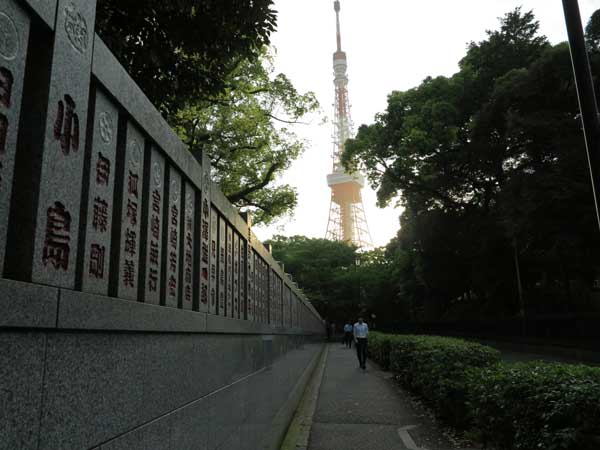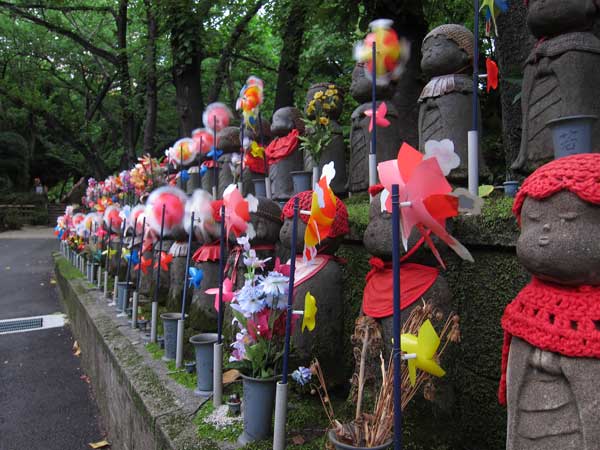
Sky Tree is getting all the attention this year. But Tokyo Tower remains a beautiful structure. I especially like seeing it from leafy Shiba Koen with its magnificent trees.

Sky Tree is getting all the attention this year. But Tokyo Tower remains a beautiful structure. I especially like seeing it from leafy Shiba Koen with its magnificent trees.

最近買ったCanon G1Xというデジタルカメラの使い方をまだ勉強しているが、よく間違います。HDRという設定を使って、動いている車が反復して映ります。芝公園の増上寺で。
I am still getting used to my new (used) Canon G1X digital camera. I mistakenly used the HDR (high dynamic range) setting, and it created this ghost like effect of the car traffic passing the crosswalk. I like the contrast between the dynamic street and the stately landmarks.

大きい木の影の下で、この芝公園の壁は江戸時代の建築を思い出させます。
This one stretch of wall at Shiba Koen, with the towering trees above it, provides a rare glimpse into Tokyo’s architectural past.

Cut bamboo and hand-written messages mark Tanabata, a traditional summer festival. I like how it’s celebrated in both the local supermarket, and also the old temples. This is from Zojoji temple in Shiba Koen.


節電のために、この夏は東京のどこでもグリーン・ウォール「垂直の庭」が作られています。混雑して、背が高い都市では、垂直の表面のほうが屋根より多いです。まず、杉並区役所とマンションのベランダでグリーン・カーテンが作られました。今、事務所や店の建物で、グリーン・ウォ―ルを作りはじめました。夏にグリーン・カーテンはヒートアイランド現象の緩和のために良くて、一年中、グーリン・ウォールは庭や農園や生息地を提供します。この写真を芝公園、新宿御苑前、大井町、大門で撮りました。
Spurred by the energy crisis post-Fukushima, there’s been a notable increase in the number of mid-rise office and retail buildings with green walls. In an over-built city, vertical surfaces are the largest potential area for gardening, farming, and habitat creation.
Tokyo has far more vertical surfaces than roof areas, and we are only at the very beginning of creating an urban forest.
I have been following this topic for a while, and have watched this idea spread from notable public spaces like Suginami’s ward office (world’s largest green curtain) to apartment balconies, flower shops, and now commercial and retail spaces. This wide distribution across Tokyo and across building types is very exciting to see.
Some questions I have include:
The answers will come from experimentation and diffusion. The photos, from top to bottom, are four green walls I’ve recently seen:
1. Hasegawa Green Building in Shiba Koen
2. Office mid-rise in Shinjuku Gyoen-mae (2 photos). The company that created and maintains this green wall is called Ishikatsu Exterior (石勝イクステリア).
3. Oimachi retail building near station.
4. Daimon office building.





三解脱門にお地蔵様が千くらいいます。お盆なので、新しい帽子や前掛けや風車を持っています。風車はみんなお地蔵様のほうを向いています。面白いと思います。
There must be hundreds or even a thousand ojizosamas at Sangendatsu-mon temple in Shiba-koen. Maybe because of summer obon, a time to communicate with the deceased, that they have fresh hats, bibs, and colorful plastic pinwheels. I love how all the pinwheels are pointed at the statues and not the people who walk by them. Close to Tokyo Tower, the parks and temples have wonderful mature trees and moss.